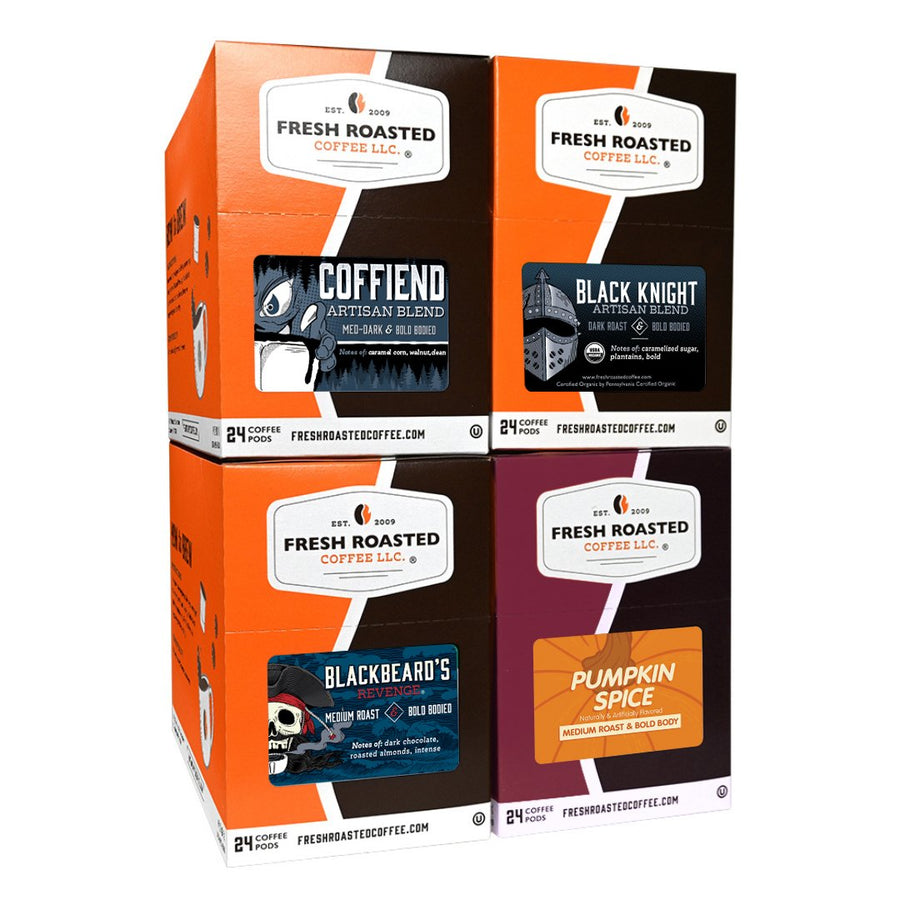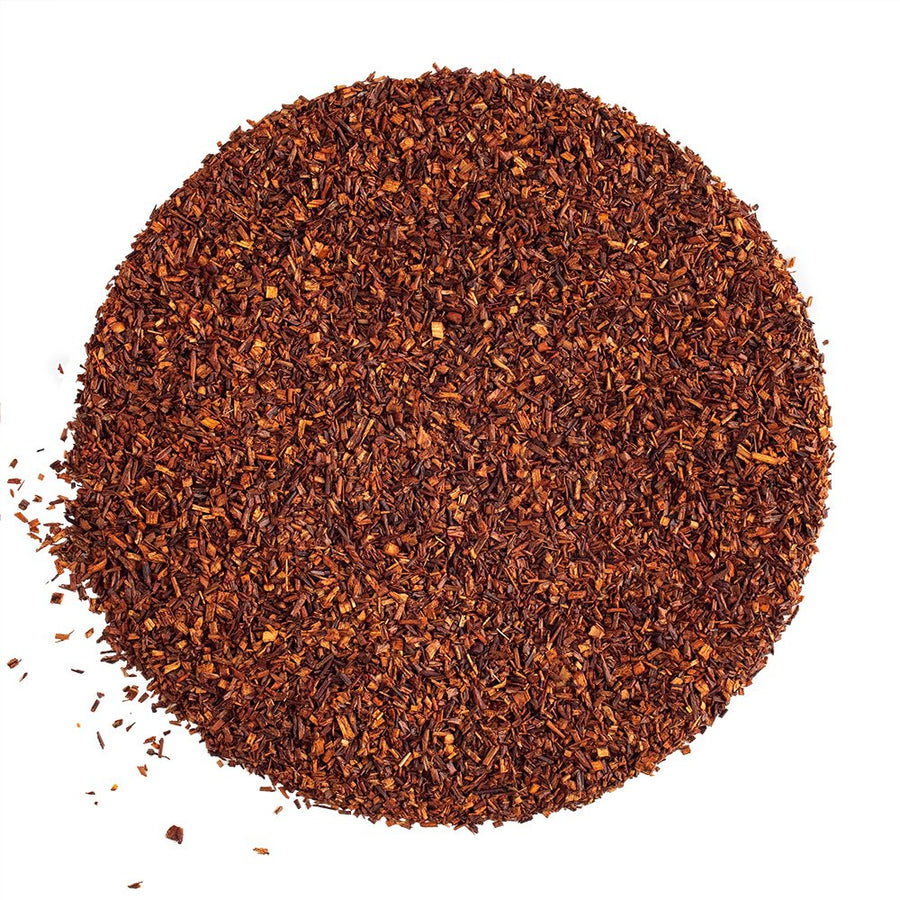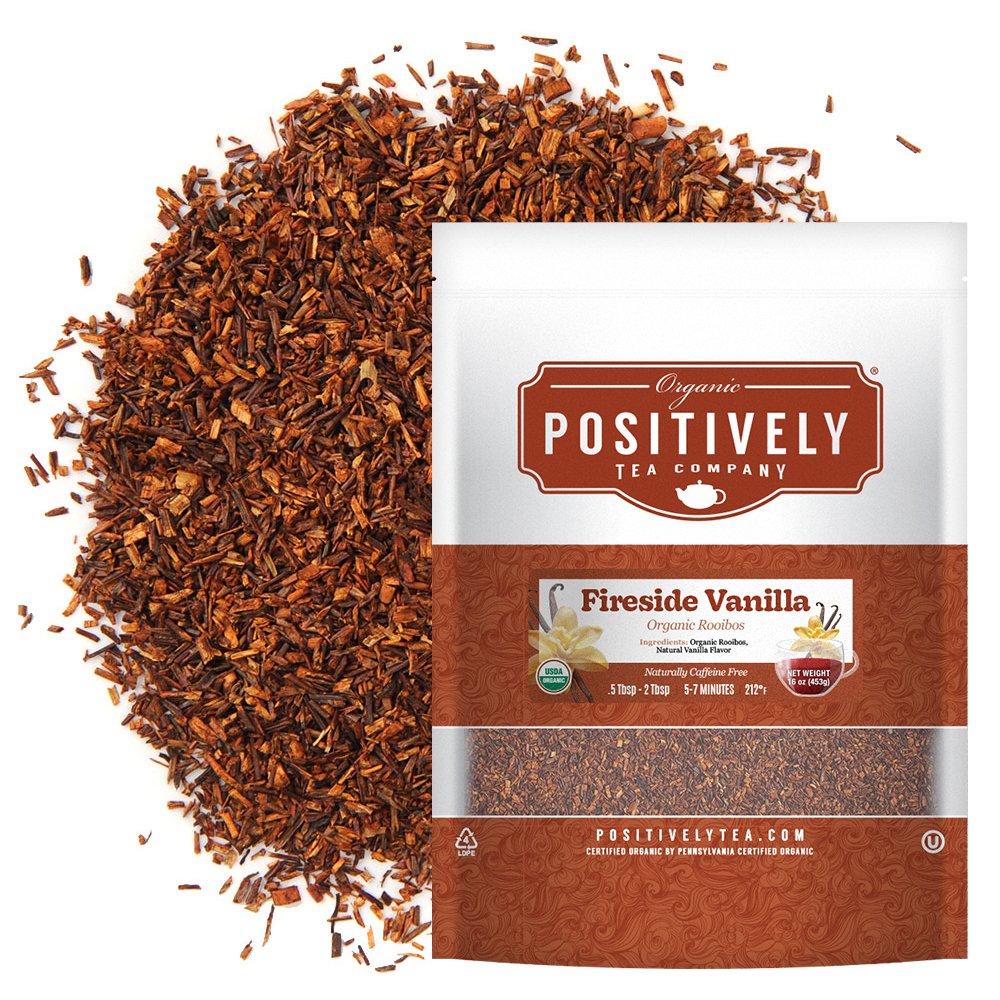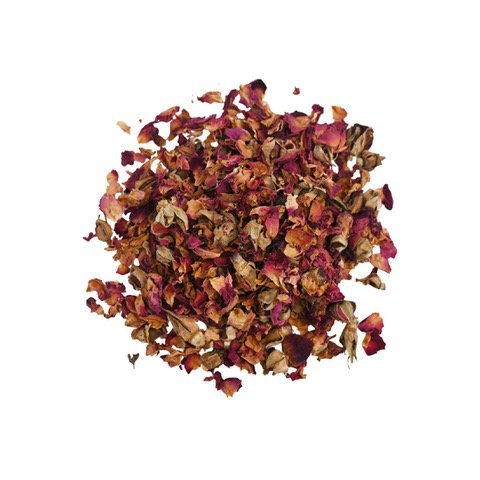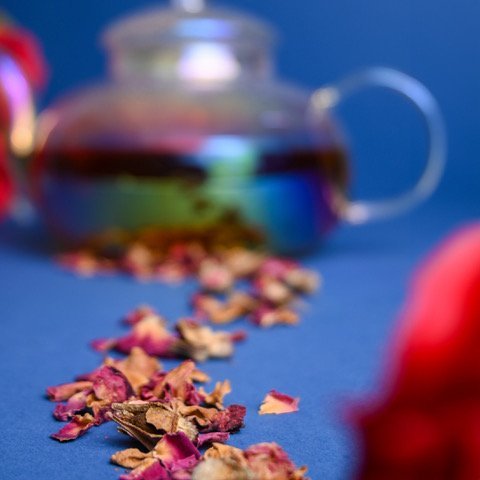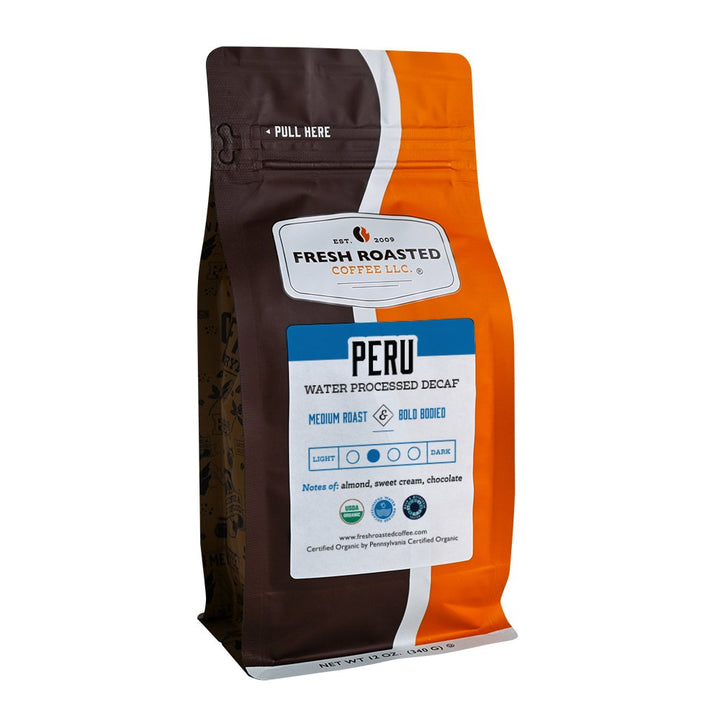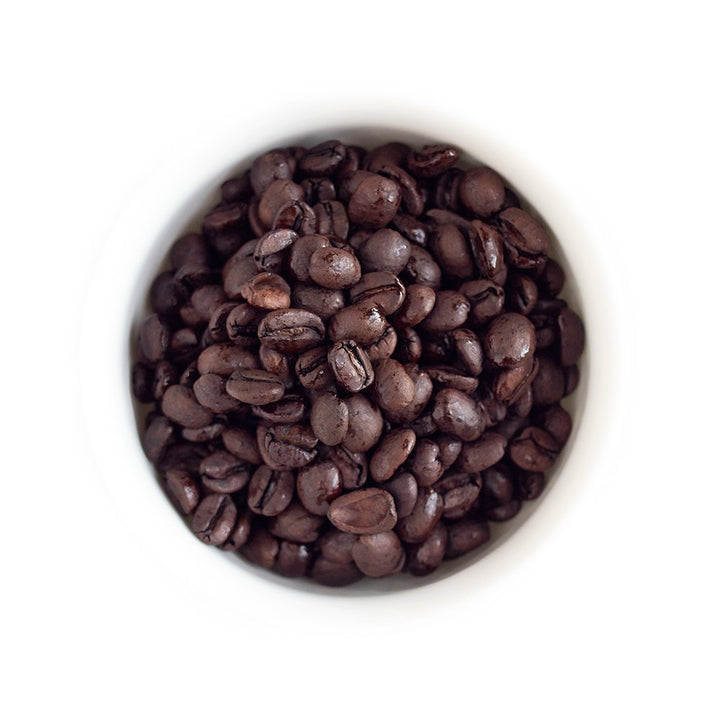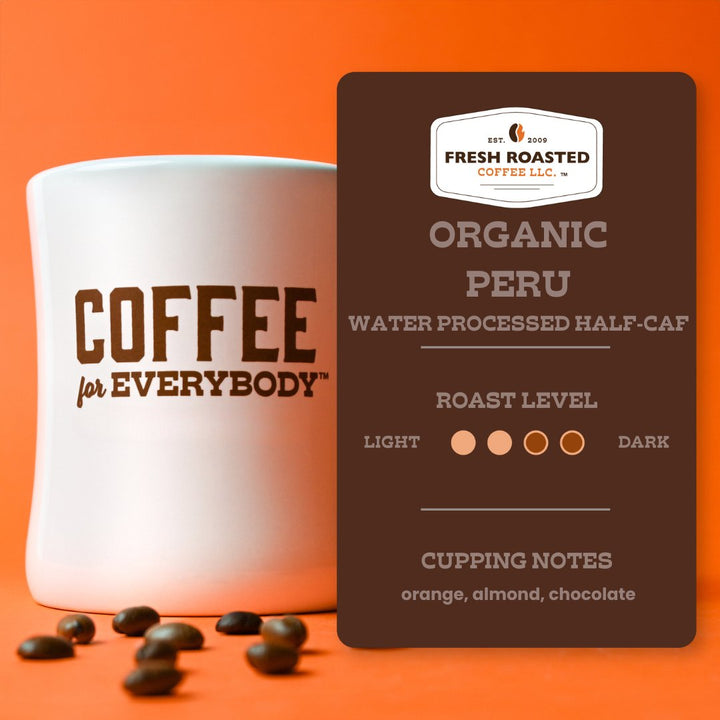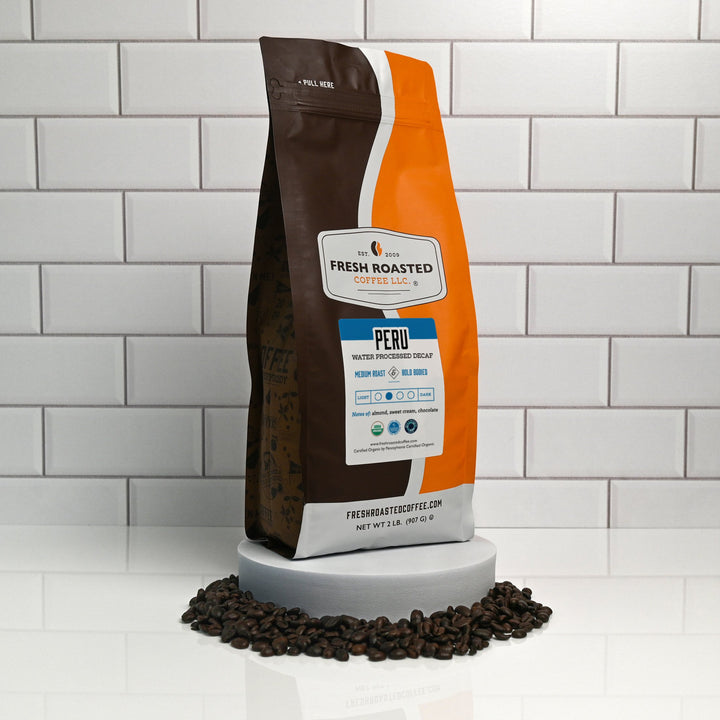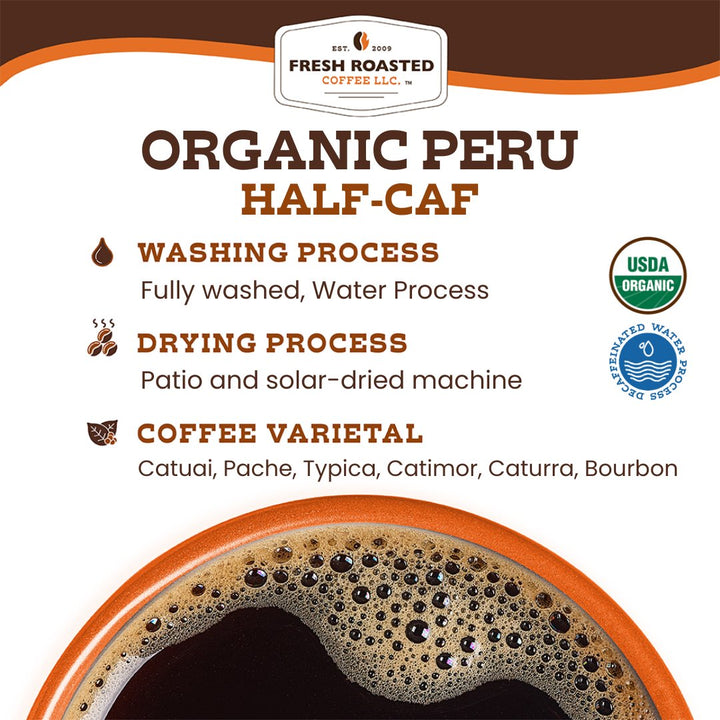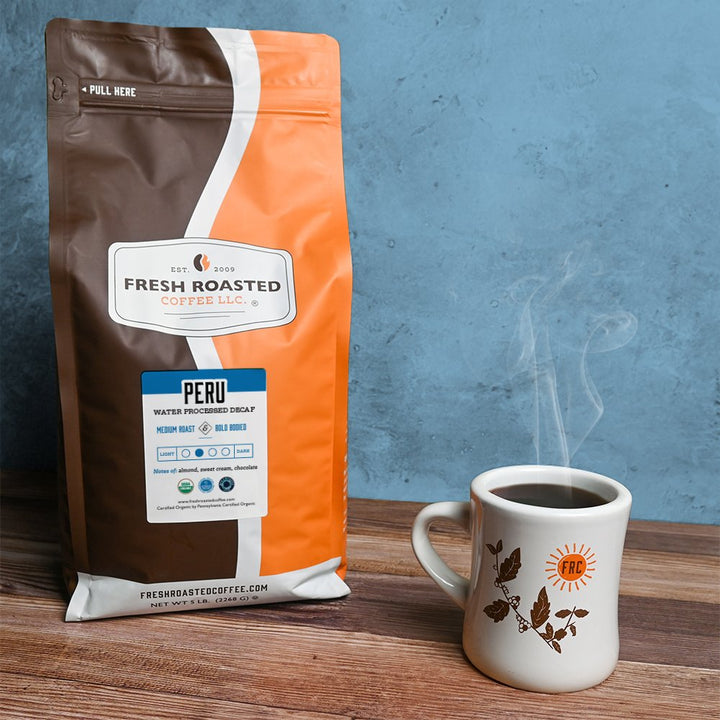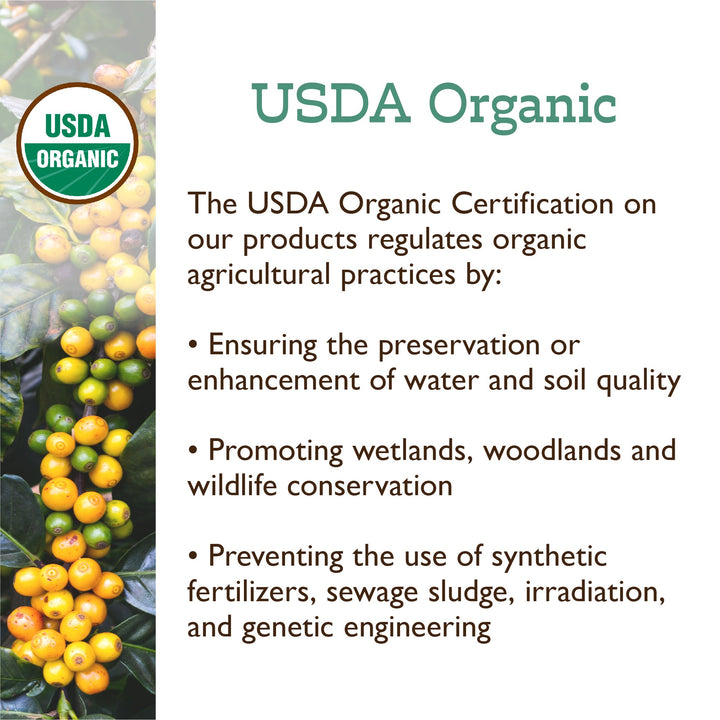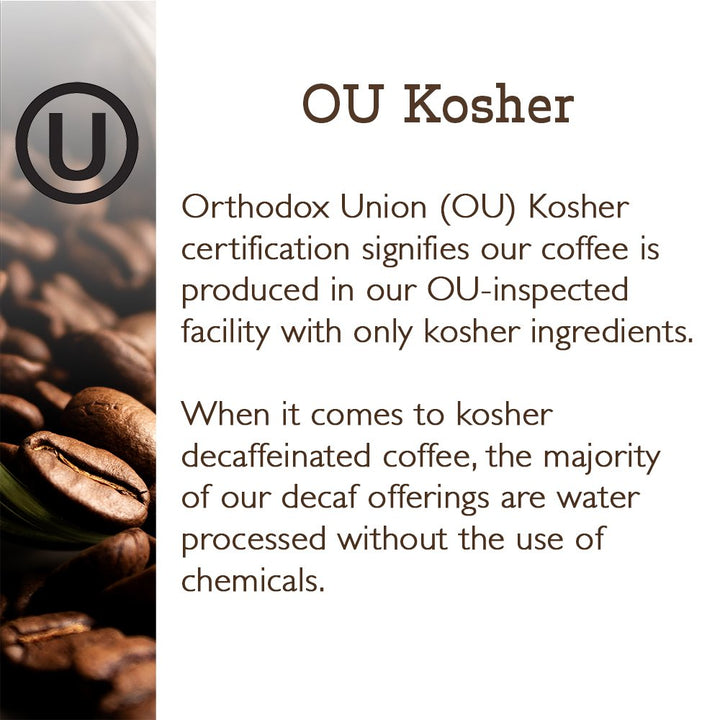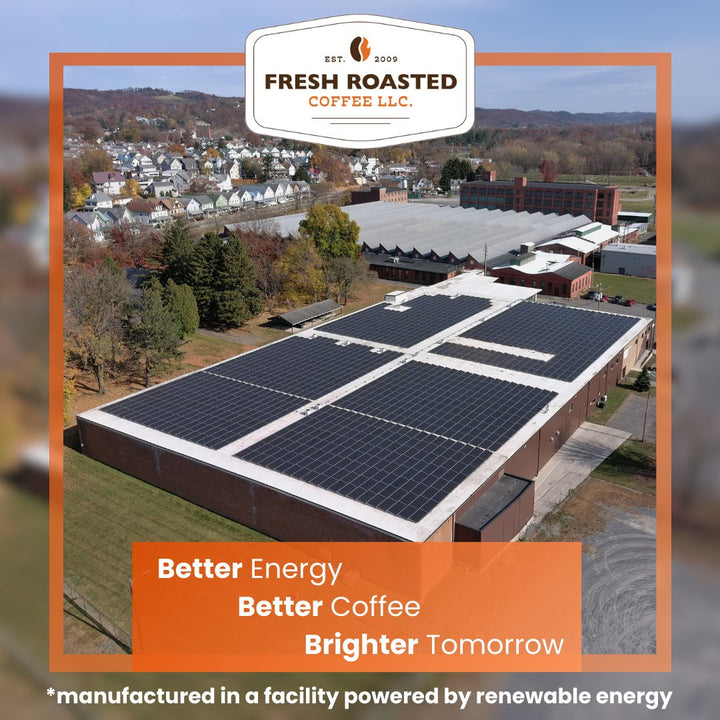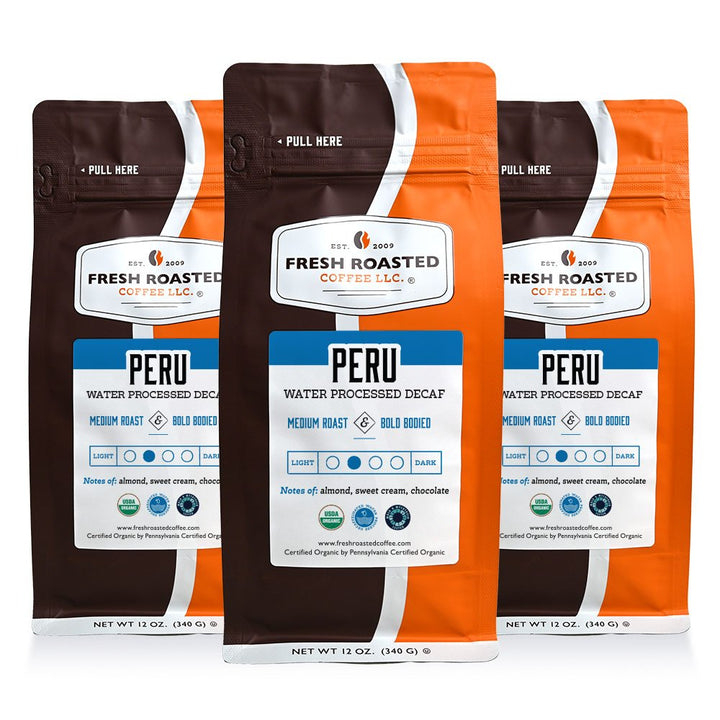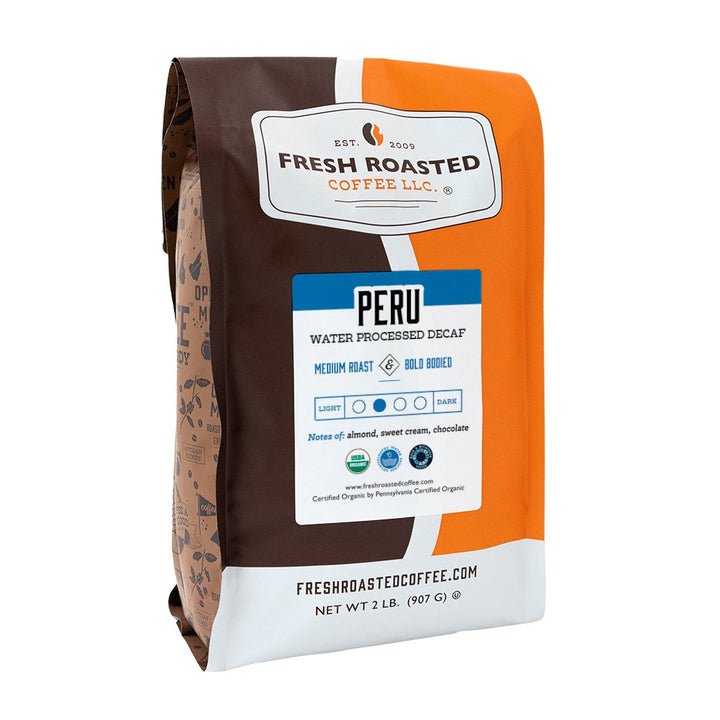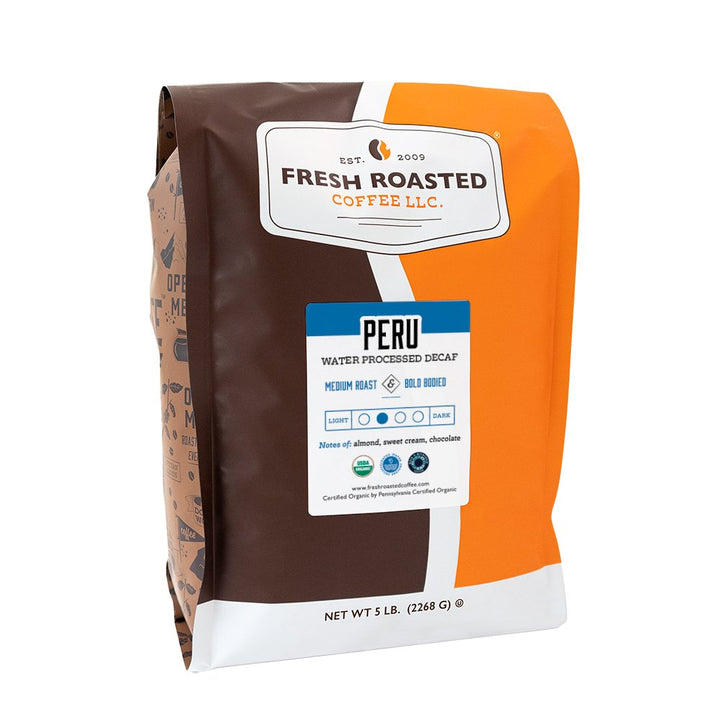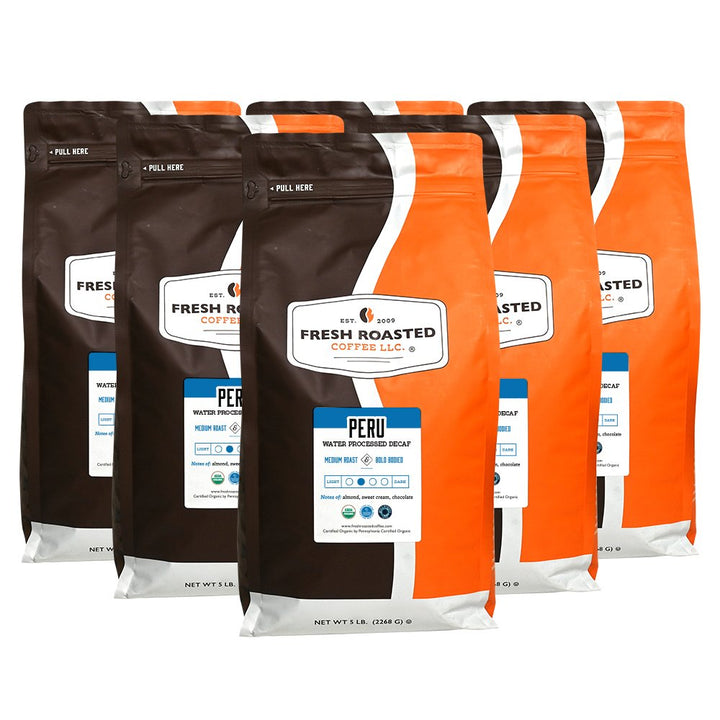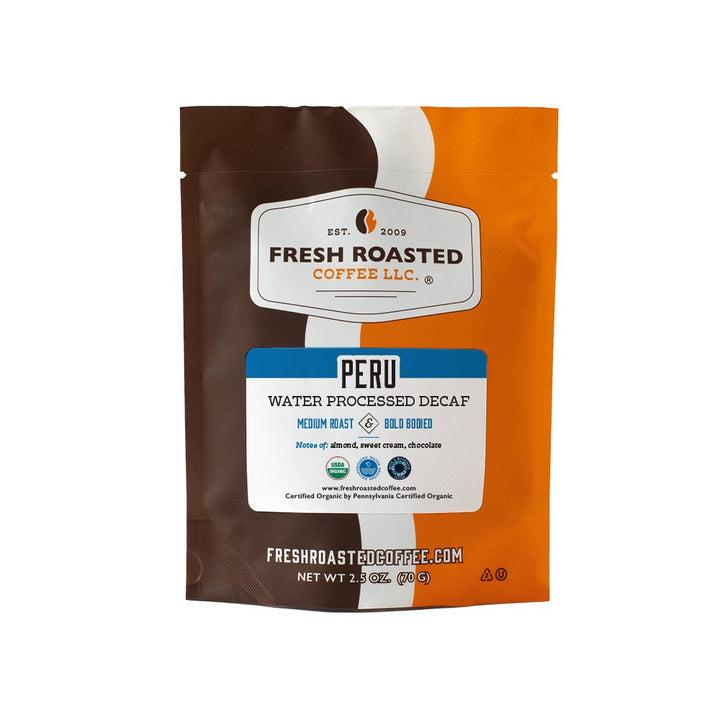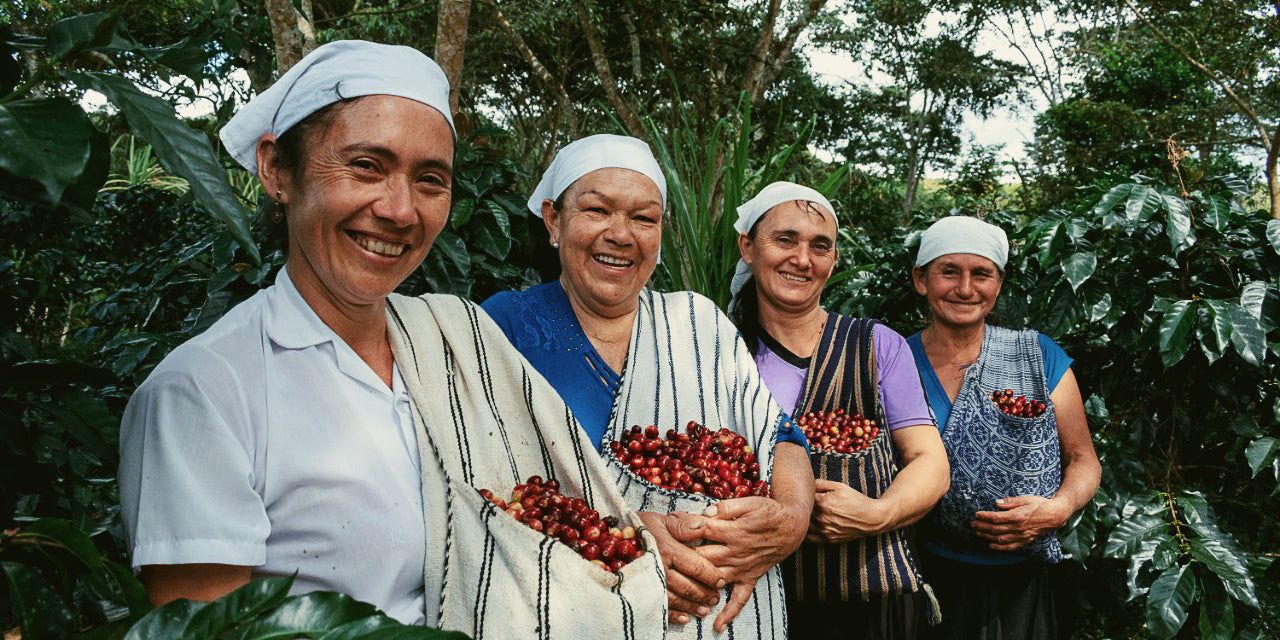Organic Peru Decaf - Roasted Coffee
Our rich Peruvian coffee is a naturally water-processed decaf that is also USDA Organic certified. The body is bold with almond hints at the start which smooths out with flavor notes of chocolate and sweet cream at the finish. The overall cup is flavorful and deep and is an excellent choice for any decaf coffee drinker who does not want to skip out on Peru's distinct intensity.
This Decaffeinated Peru utilizes a water-process decaffeination method, eliminating the need for harsh compounds or chemicals during caffeine extraction, while also helping to preserve the coffee's flavor, balance, and body. This is truly a well-balanced and mildly acidic Peruvian decaf coffee that promotes economic and environmental sustainability.
This coffee has been subjected to thorough mold, mycotoxin, and pesticide screening conducted by a certified, third-party analytical laboratory. The findings declare the product to be toxicologically safe and in full compliance. No detectable levels of mold, Aflatoxin, Ochratoxin, or pesticides were identified in the analyzed sample.
Ingredients: Organic 100% Arabica coffee. No additives or preservatives.
Organic certified by PA Certified Organic. OU Kosher certified. Produced in an SQF-certified, renewable energy-powered facility.
At Fresh Roasted Coffee, we're pioneering the future of coffee. Our advanced, eco-friendly roasters unlock superior flavor in every bean while consuming less fuel and producing fewer emissions. In 2024, we're taking our commitment a step further. The launch of our new solar array will position us as one of the cleanest commercial roasters in the nation, proving that the most delicious coffee can also be the most sustainable.
